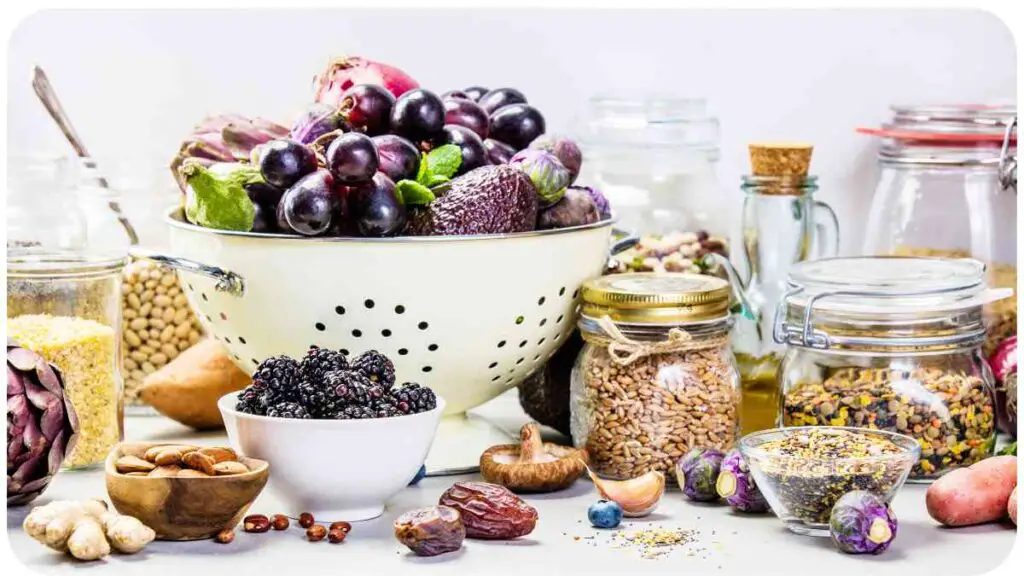Food additives have become an integral part of the modern food industry. They enhance flavors, prolong shelf life, improve appearance, and add texture to processed foods. However, with so many different additives out there, it can be challenging to understand what they are and how they affect our health.
This article aims to demystify food additives, providing you with a quick guide to decoding these often perplexing ingredients.
To help you navigate through this guide effectively, we have categorized the information into clearly defined sections, making it easier to find the information you need. Let’s dive deeper into the world of food additives and explore their impact on our food and health.
| Takeaways |
| Understanding food additives is important for making informed choices about the food you consume. |
| Food additives serve various purposes, including flavor enhancement, preservation, and texture improvement. |
| E-numbers are standardized codes used to identify food additives on labels. |
| Some individuals may have sensitivities or allergies to certain food additives. It is essential to read labels and avoid those additives if necessary. |
| Opting for whole foods, cooking from scratch, and choosing natural or organic options can help reduce exposure to food additives. |
| Balancing your diet with a variety of real, unprocessed foods is key to maintaining a healthy and well-rounded diet. |
2. What are Food Additives?
Food additives are substances that are intentionally added to food during processing or preparation to improve its quality, flavor, appearance, or stability. They can be either natural or synthetic and are often used in small amounts. Food additives have been used for centuries, with ancient civilizations incorporating ingredients like salt and spices to enhance flavor and preserve foods.
In modern times, food additives have evolved significantly, and numerous compounds are now utilized to meet specific needs. These additives can be divided into various categories, which we will explore in detail throughout this article.
Food additives play a crucial role in the food industry by ensuring product consistency, extending shelf life, and enhancing the sensory experience. However, it is essential to understand their potential impact on our health and make informed choices when it comes to the food we consume.
When it comes to simplifying your home cooking and meal planning, follow this comprehensive Ultimate Guide to Meal Planning that provides practical tips and strategies to make your life easier.
3. The Importance of Understanding Food Additives

As consumers, it is essential to have a basic understanding of food additives and their effects. By decoding food additives, we gain the ability to make informed decisions about the products we consume, promote better health, and reduce the potential risks associated with excessive intake of certain additives.
Understanding food additives empowers individuals to choose healthier options and make conscious decisions about their diet. By recognizing potential allergens or additives that may trigger sensitivities, individuals can avoid adverse reactions and enjoy a more wholesome eating experience.
4. Common Types of Food Additives
Food additives encompass a wide range of substances, each serving a specific function. To facilitate easy navigation and comprehension, we will discuss each category in detail, along with their common uses and potential effects. Below are some of the most commonly used food additives:
Discover the incredible flavors and aromas that different herbs and spices can bring to your dishes with this comprehensive guide on The Power of Spices. Enhance your cooking skills and create mouth-watering meals that are full of taste and depth.
4.1 Preservatives
Preservatives are additives used to prevent spoilage and extend the shelf life of food products. They inhibit the growth of bacteria, fungi, or other microorganisms that can lead to foodborne illnesses. Common preservatives include benzoates, sorbates, and sulfites.
| Preservative | Common Uses |
| Benzoates (E210-E219) | Soft drinks, fruit juices, vinegar |
| Sorbates (E200-E209) | Cheese, dried fruit, wine |
| Sulfites (E220-E228) | Wine, dried fruits, processed meats |
Preservatives are vital for ensuring the safety and longevity of many processed foods. However, some individuals may be sensitive or allergic to certain preservatives, so it is crucial to be aware of their presence in foods and their potential side effects.
Confused by food labels? Gain a clear understanding of what they mean with this Comprehensive Guide on Understanding Food Labels. Navigate the intricate details and make informed choices when decoding food additives and selecting healthier options for your diet.
4.2 Flavor Enhancers
Flavor enhancers are additives that improve or intensify the taste of food products. They are often used to compensate for flavor loss during processing or to enhance the natural flavors present in the food. Monosodium glutamate (MSG) is one of the most well-known flavor enhancers.
| Flavor Enhancer | Common Uses |
| Monosodium Glutamate (MSG) | Soups, snacks, processed meats |
| Disodium Inosinate (E631) | Potato chips, instant noodles |
| Disodium Guanylate (E627) | Soups, seasonings |
While flavor enhancers can enhance the taste of food, some individuals may be sensitive to certain additives like MSG. It is important to be mindful of their presence and potential effects, especially if you have known sensitivities or allergies.
4.3 Colors and Dyes

Colors and dyes are additives used to give food products an appealing appearance. They can be derived from natural sources or chemically synthesized. Food dyes can be found in a wide range of products, from candies and beverages to baked goods.
| Food Dye | Common Uses |
| Tartrazine (E102) | Processed foods, cereals, soft drinks |
| Carmine (E120) | Yogurt, candies, ice cream |
| Titanium Dioxide (E171) | Confectionery, baked goods |
While food colors and dyes make foods visually appealing, some individuals may have sensitivities or allergies to certain dyes. It is important to be aware of their presence, especially if you are prone to reactions or have dietary restrictions.
Concerned about the safety of non-stick pans? Explore your options and get the facts straight in this informative article on Are Non-Stick Pans Safe?. Find out about alternative cookware choices and make informed decisions for your kitchen.”
4.4 Sweeteners
Sweeteners are additives used to impart a sweet taste to food products. They can be natural or artificial and are commonly used as alternatives to sugar. Sweeteners are prevalent in a wide range of products, including beverages, baked goods, and low-calorie or sugar-free products.
| Sweetener | Common Uses |
| Sucralose | Diet sodas, sugar-free desserts |
| Aspartame | Low-calorie beverages, chewing gum |
| Stevia | Yogurts, flavored water, protein bars |
While sweeteners can provide a sweet taste without the added sugar, it is important to note that excessive intake of artificial sweeteners may have potential health implications. Moderation and awareness of different sweeteners are key when choosing products.
4.5 Emulsifiers
Emulsifiers are additives that help stabilize and blend ingredients that would otherwise separate. They are commonly found in processed foods, particularly those with a creamy or smooth texture.
| Emulsifier | Common Uses |
| Soy Lecithin | Chocolate, spreads, salad dressings |
| Mono- and Diglycerides (E471) | Ice cream, margarine, bakery products |
| Polysorbate 80 (E433) | Mayonnaise, baked goods, ice cream |
Emulsifiers play a vital role in creating the desired texture and consistency of various food products. However, in some individuals, certain emulsifiers may cause digestive discomfort or allergic reactions.
4.6 Stabilizers
Stabilizers are additives that maintain the consistency, texture, and appearance of food products. They help prevent separation of ingredients and improve the overall quality and shelf life of processed foods.
| Stabilizer | Common Uses |
| Xanthan Gum | Salad dressings, sauces, gluten-free baking |
| Carrageenan | Dairy products, processed meats, desserts |
| Gum Arabic | Soft drinks, confectionery, coating agent |
Stabilizers are widely used in various food products to maintain their desired properties. However, some individuals may have sensitivities or allergies to certain stabilizers, so it is important to be aware of their presence in foods.
Unveil the truth about organic foods and their impact on your health and the environment through this enlightening article on The Truth About Organic Foods. Discover what you need to know to make conscious choices for a sustainable and healthy lifestyle.
4.7 Antioxidants
Antioxidants are additives that help prevent the oxidation of food, which can lead to spoilage or flavor degradation. They are commonly used in products that have a longer shelf life or are prone to oxidation.
| Antioxidant | Common Uses |
| Vitamin C (Ascorbic Acid) | Juices, cured meats, canned fruits |
| Tocopherols (E306-E309) | Vegetable oils, snacks, breakfast cereals |
| BHA (Butylated Hydroxyanisole) | Margarine, snacks, baked goods |
Antioxidants serve an important purpose in preserving and extending the shelf life of many food products. It is worth noting that some antioxidants may have potential health concerns, so it is essential to understand the impact of these additives on your overall diet.
5. Regulations and Safety Standards
To ensure the safety of consumers, food additives are regulated by various authorities and undergo extensive testing before they are approved for use. In many countries, including the United States, the European Union, and Australia, food additives are subject to strict regulations and safety standards.
Regulatory bodies assess the potential risks, evaluate scientific data, and establish acceptable daily intake (ADI) limits for each food additive. It is important to note that regulatory authorities continuously review and update these standards to adapt to emerging research and ensure consumer safety.
6. How to Identify Food Additives on Labels
To make informed choices about the food we consume, it is essential to understand how to identify food additives on product labels. Here are a few key points to consider:
6.1 E-Numbers
One way to recognize food additives is through their E-numbers. E-numbers are codes assigned to food additives in the European Union. They provide a standardized way of identifying additives used in food products. For example, E102 (Tartrazine) is a food dye commonly found in processed foods and soft drinks.
When reading the ingredient list on a product label, look for the E-number associated with a particular additive. This can help you quickly identify if a product contains additives and which ones they are.
6.2 Common Additive Names
Aside from E-numbers, additives are often listed by their common names in ingredient lists. Familiarizing yourself with these names can make it easier to spot additives. For example, instead of searching for E220, you can look for “sulfur dioxide” as the additive name.
To decode food additives effectively, refer to resources that provide comprehensive lists of common additive names and their corresponding E-numbers. This will help you become more familiar with the additives used in various food products.
6.3 Health Risks and Allergies
When examining food labels, it is important to be aware of any potential health risks or allergies associated with specific additives. Some individuals may have sensitivities, intolerances, or allergies to certain additives, which can cause adverse reactions.
If you have known allergies or sensitivities to certain food additives, carefully read labels and avoid products that contain those additives. Additionally, stay informed about any new information or research regarding the safety of certain additives to make educated choices about the foods you consume.
7. The Impact of Food Additives on Health

Understanding the impact of food additives on health is crucial for making informed decisions about your diet. While many food additives are generally recognized as safe when consumed in moderate amounts, some individuals may be more susceptible to their effects. Here are a few key points to consider:
7.1 Negative Effects
Excessive consumption of certain food additives, such as high amounts of artificial sweeteners or certain preservatives, may have negative effects on health. These can include gastrointestinal issues, allergic reactions, or even potential long-term health risks. It is important to maintain a balanced and varied diet, consuming additives in moderation.
7.2 Allergic Reactions
Food additives, like any other food component, can trigger allergic reactions in susceptible individuals. Common allergens like sulfites or food dyes may cause symptoms such as skin rashes, itching, swelling, or respiratory distress. If you have known allergies, it is important to read labels carefully and avoid products that contain allergenic additives.
7.3 Sensitivities and Intolerances
Some individuals may experience sensitivities or intolerances to certain food additives. For example, some people may be sensitive to monosodium glutamate (MSG) or experience digestive issues due to certain emulsifiers or stabilizers. Pay attention to your body’s response to certain additives and consult a healthcare professional if you suspect an intolerance.
It is important to note that the majority of individuals can consume food additives without adverse effects. However, being aware of your own body’s response and making educated choices about the foods you consume can contribute to overall well-being.
8. Eating a Healthy Diet with Minimal Additives
While food additives are commonly used in processed foods, there are ways to minimize your exposure and maintain a healthy diet. Here are a few tips:
8.1 Read Ingredient Labels
Reading ingredient labels is crucial for identifying food additives. Look for products with shorter ingredient lists and opt for those that contain recognizable, whole food ingredients. This can help you avoid heavily processed foods that are often laden with additives.
8.2 Choose Whole Foods
Eating a diet rich in fruits, vegetables, whole grains, and lean proteins reduces your reliance on processed foods. Whole foods are generally free from additives, providing you with essential nutrients without the potential risks associated with excessive additive consumption.
8.3 Cook from Scratch
Preparing meals from scratch allows you to have more control over the ingredients you use. By using fresh, unprocessed ingredients, you can avoid many common additives present in processed foods.
8.4 Seek Organic or Natural Options
Consider choosing organic or natural products when possible, as these tend to have fewer synthetic additives. Check for certifications such as the USDA Organic label, which ensures compliance with organic standards.
By incorporating these practices into your lifestyle, you can prioritize a diet focused on real, whole foods while minimizing your exposure to food additives.
9. Conclusion
Food additives play a significant role in the modern food industry, providing various benefits such as flavor enhancement, preservation, and maintaining product consistency. While many additives are considered safe for consumption, it is essential to be aware of their potential effects on health, especially for individuals with specific sensitivities or allergies.
By understanding how to identify food additives on labels, staying informed about their potential risks, and making conscious choices about the foods you consume, you can maintain a balanced and healthy diet. Remember that moderation, variety, and a focus on whole foods are key elements in reducing your reliance on processed foods and minimizing your exposure to additives.
If you have concerns or specific dietary needs, it is always advisable to consult with a healthcare professional or registered dietitian who can provide personalized guidance based on your individual circumstances.
Further Reading
Here are some resources for further reading on the topic of food additives:
Decoding Food Additives: A Comprehensive Guide to Understanding Food Labeling – This book provides a comprehensive guide to understanding food labeling and decoding the various additives used in processed foods.
Decoding Food Additives: A Practical Guide to Understanding Food Labels – This practical guide helps readers understand food labels and the significance of food additives in the context of health and diet.
Decoding Food Additives: Understanding the Impact on Your Child’s Health – This resource from the Cuddles Foundation provides information on understanding food additives and their potential impact on child health.
FAQs
What are common food additives?
Common food additives include preservatives, flavor enhancers, colorings, sweeteners, emulsifiers, stabilizers, and antioxidants.
Are all food additives safe to consume?
Most food additives are considered safe for consumption when consumed in moderate amounts. However, some individuals may have sensitivities or allergies to certain additives, and excessive consumption of certain additives may have potential health implications.
How can I identify food additives on labels?
Food additives can be identified on labels by their E-numbers or common names. E-numbers are standardized codes for additives in the European Union, while common names are used to describe additives in ingredients lists.
What are potential health risks associated with food additives?
Excessive consumption of certain food additives, such as artificial sweeteners or certain preservatives, may have negative effects on health. Additionally, some individuals may experience allergies or sensitivities to specific additives.
How can I reduce my exposure to food additives?
To reduce exposure to food additives, consider opting for whole foods, cooking from scratch, reading ingredient labels, and choosing organic or natural options when possible. These practices can help you prioritize a diet focused on real, unprocessed foods.

Hi, I’m Hellen James! I’m a professional chef who has been cooking for over 12 years. In my career, I’ve worked at some of the world’s most prestigious hotels and restaurants. My expertise lies in creating recipes that are simple but delicious, and I love to experiment with new ingredients and techniques. I started this blog because I want to share my passion for cooking with everyone who loves food as much as I do.


